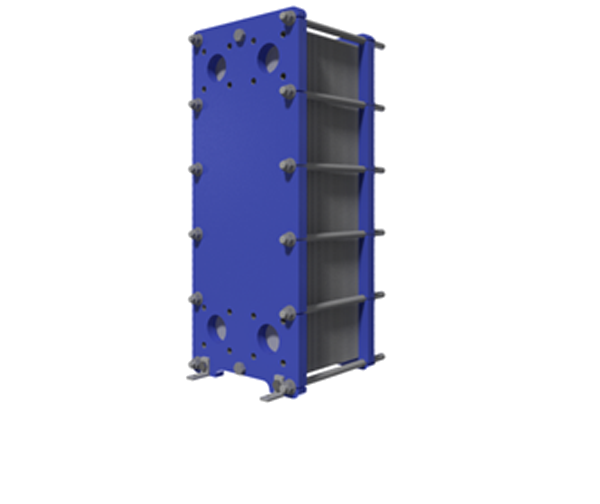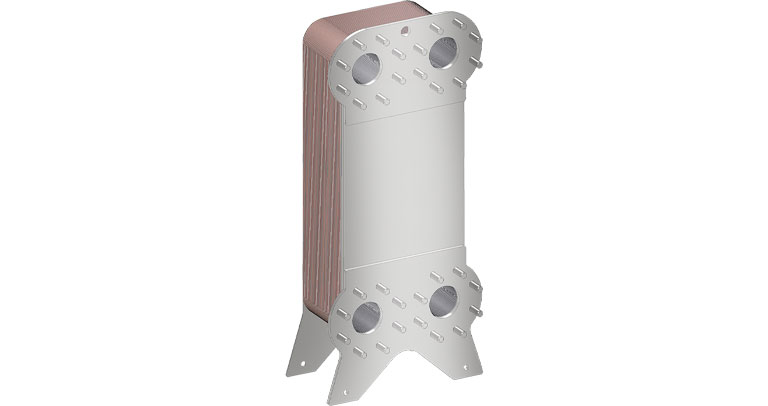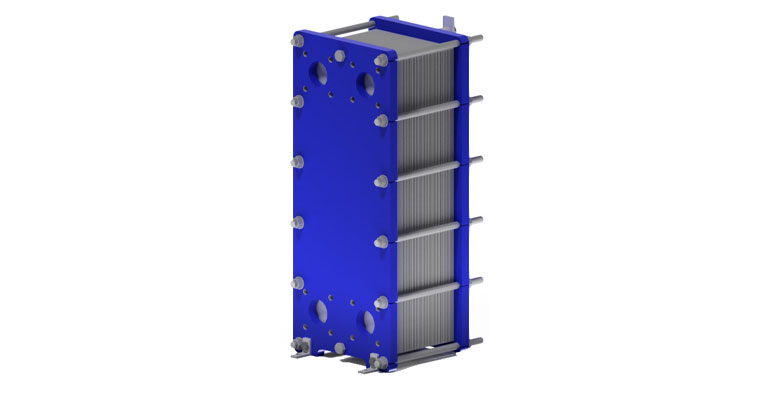
Plate heat exchangers
Plate heat exchangers as brazed versions - sealed versions - semi-welded versions - free-flow plate heat exchangers - evaporators - condensers - special versions
ETS offers plate heat exchangers as an efficient and economical alternative to traditional heat exchangers for a variety of applications in virtually all areas.
The plate heat exchangers are suitable for a differential pressure of up to 25 bar and temperatures from -180°C to +200°C and can also be used when processing aggressive liquids.
Compared to tube and coil exchangers, plate heat exchangers offer higher thermal efficiency, easy installation and operation, compact design, more flexibility and better heat recovery.

Experience
ETS is at your disposal with many years of experience and works at a high level of quality in both the production and calculation of plate heat exchangers. With the help of specially developed computer programs, an optimal solution can be dimensioned quickly and safely at a competitive price. Customer-specific designs as well as larger and smaller series can be delivered in a short time.
Areas of application
The plate heat exchangers are used in a variety of different industries, e.g.:
- Industry
- Navy
- Food production
- Dairy farms
- Heating
- Distance heating
Materials
As standard, the plates are made of AISI316, AISI304 or titanium, the end plates are made of St37 or stainless steel, depending on the model. Other materials can also be supplied upon request.
Heat exchanger types
Type SL
Brazed plate heat exchangers have no seals and can be used in the temperature range from -180°C to +200°C with a maximum working pressure of 25 bar. The high turbulence guarantees excellent heat transfer with minimal space requirements. They are used as heat exchangers for liquid media in industry and building services and as condensers and evaporators in refrigeration systems.
Type S
Sealed plate heat exchangers of the S series are used for high transfer rates, primarily for liquid media in industry, marine and building services. The maximum working pressure is 16 bar at 160°C
Type SF
Free-flow plate heat exchangers allow the cooling or heating of contaminated media, e.g. with fibers or solid particles, without deposits forming on the plates. Typical applications include cooling or heating orange juice, yogurt, ice cream, beer wort, tomato sauce, wastewater, cellulose, etc.
Type SW
Semi-welded plate heat exchangers are primarily used for high-pressure purposes and for aggressive media where no seals or soldering are permitted. The weld seam lies outside the sealing track and thus prevents corrosion attack.
Type PLC
The "round welded" plate heat exchanger works as a tube heat exchanger, with the difference that the tubes have been replaced by more efficient plates. These are welded together into a package using laser/TIG and installed in a tube. Advantages: no seals, safe operation, up to 250°C and 25bar, space-saving etc. The SPS is used for district heating, steam or oil WT, as well as as an evaporator and condenser
Type WW
These types of devices are made from flat sheet metal chambers and are very versatile. The sheet metal channels are alternately welded together using knobbed or round spacers. No seals are required between these chamber sheets. Both sides are welded against each other, mixing products is not possible. Advantages: no seals, safe operation up to 300°C and 16bar, compact design etc.



